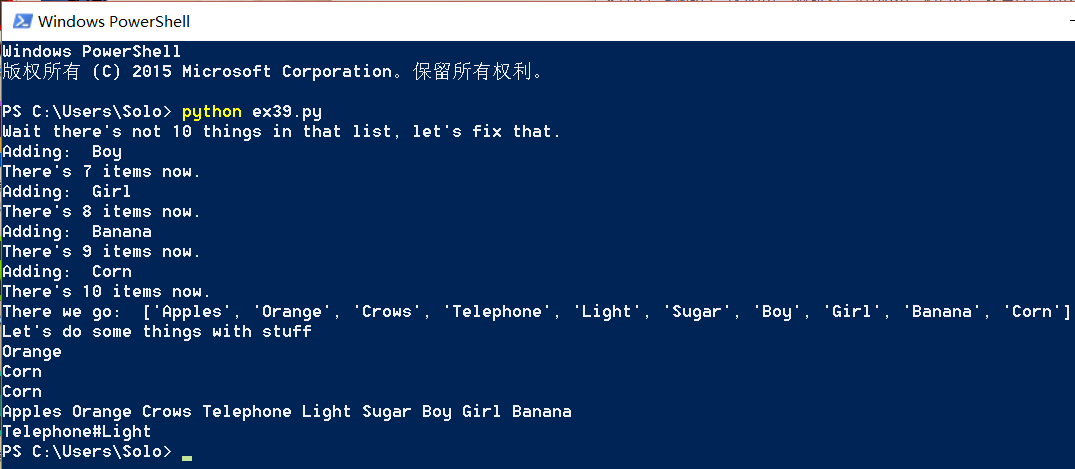《笨办法学Python》 第39课手记
本节课讲列表的操作,用来做练习的代码中出现了之前用到过的几个函数,是一节复习课。你需要记住它们。
原代码如下:
ten_things = "Apples Orange Crows Telephone Light Sugar"
print "Wait there's not 10 things in that list, let's fix that."
stuff = ten_things.split(' ')
more_stuff = ["Day", "Night", "Song", "Frisbee", "Corn", "Banana", "Girl", "Boy"]
while len(stuff) != 10:
next_one = more_stuff.pop()
print "Adding: ", next_one
stuff.append(next_one)
print "There's %d items now." % len(stuff)
print "There we go: ", stuff
print "Let's do some things with stuff"
print stuff[1]
print stuff[-1] # whoa!! fancy
print stuff.pop()
print ' '.join(stuff) # what? cool!
print '#'.join(stuff[3:5]) # super stellar!结果如下:
本节课涉及的知识:
1.stuff.split(’ ‘),以空格为标志分割字符串,默认全部分割,可以在括号里”后面指定参数以使解释器按规定次数分割。
2.stuff.append(next_one),向列表stuff中增添元素next_one,执行方式作者在文中有介绍。
3.print ‘#’.join(stuff[3:5]) ,用#将stuff中的第3个元素和第4个元素连接起来,[3:5]这个参数给出了要连接的元素在列表中的位置,注意不包括第5个元素。
